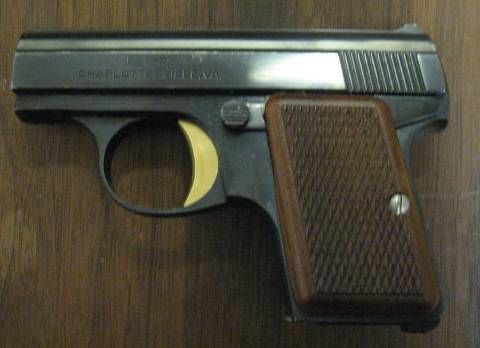Bill DeShivs said:
You simply can't make a .32, .380, or 9mm as small as you can make a .25.
Generally true, but that truth doesn't explain the lack of NEW guns in .25 ACP.
It appears that the .25 ACP round was created around the turn of the 20th century to offer a small semi-auto that was more reliable than .22. Gunmakers have come a long way since then, and there are options now that simply weren't available back then -- like polymer frames and economical aluminum frames with polymer covers. The performance of ammunition has improved, too, and there are now rounds designed for shorter barreled small-caliber guns in .22, .22wmr, .25, .32, and .380. That means there are now a LOT of small semi-autos that shoot more-powerful centerfire rounds.
Not mentioned in any of these discussions is the fact that people are just PHYSICALLY LARGER now, and it's not all just extra fat; in most modern areas, people are bigger, broader, taller and stronger, and a
very small gun is arguably less necessary than might have been the case 100+ years ago.
The .25 ACP may, in fact, be a bit like .45 GAP, a round that was deliver .45 power from smaller-gripped gun. The fact that is now being done with the .45 ACP round makes .45 GAP and .45 GAP semi-autos, while still around, less attractive as an alternative to full-size .45 ACP semi-autos.
I suspect that .25 ACP will stay around for a long time, if for no other reason that there remains a lot of .25 semi-autos out there. But I wouldn't expect to see many NEW guns for the reasons stated above.
For a while I had an Astra Cub, and it was a fun little gun, and reasonably accurate. (I think it is basically the same gun as the Colt Junior.) If I needed a very small centerfire gun, I think I'd go with a Kel-Tec P32. The P-32 is probably as light (or lighter) than most .25 pistols, only a bit larger than the smallest, and fires a more-powerful round that is just as reliable as any centerfire round.
Here's an interesting video from YouTube.
https://www.youtube.com/watch?v=nnnJ0vjXQmo
The guy doing the video -- Paul Harrell -- is clearly a good shot, and seems to have no ax to grind. Paul argues that the .22 and .25 stack up pretty evenly, but the advantage of the .25 is that it tends to be a bit more reliable. I'd like to see the same type of performance comparison that he did with the .22 vs. .25 done with the .25, .32 and .380... There ARE very small .32s and .380s.



